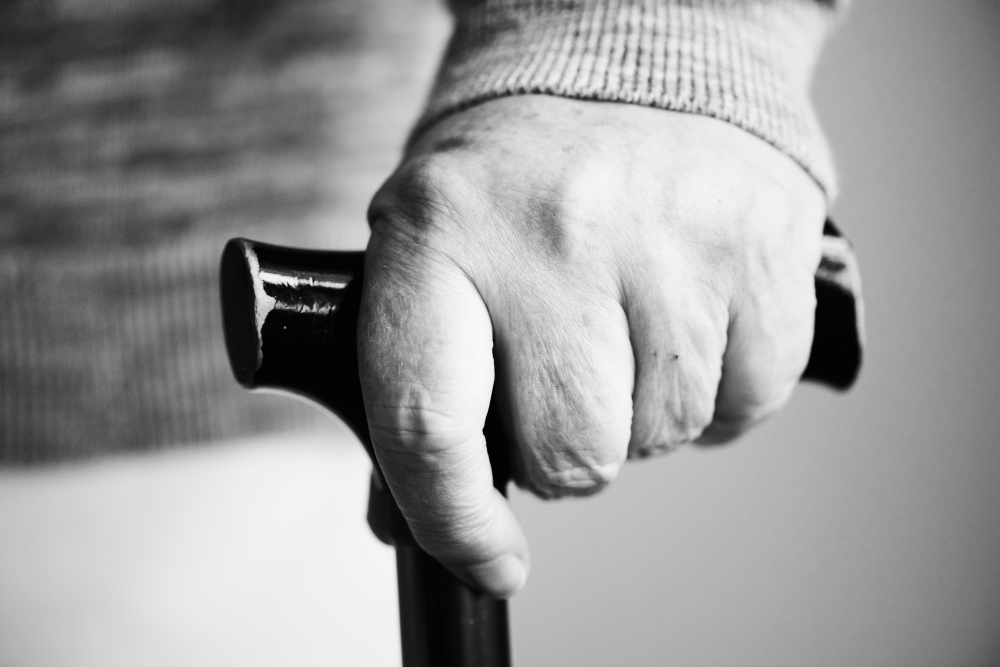


The findings underscore the need to pay more attention to depressive symptoms and joint pain in older adults in primary care settings (photo: Freepik*)
Published on 11/13/2024
By Maria Fernanda Ziegler | Agência FAPESP – Elderly people who have symptoms of depression and moderate or severe joint pain tend to show faster cognitive decline, especially in the area of memory. This was shown by a study supported by FAPESP and published in the journal Aging & Mental Health.
The conclusions are based on data from 4,718 participants aged 50 and older who were followed up over 12 years. The authors of the article include researchers from the Federal University of São Carlos (UFSCar) in Brazil and University College London (UCL) in the United Kingdom.
“Both pain and symptoms of depression act on areas of the brain [mainly the hippocampus] associated with cognitive processing. Therefore, there’s an overlap of information, causing the brain to become ‘congested’ and have to delegate some functions to process the pain response and the symptoms of depression. This would interfere with formation of memory and global cognitive performance. In the study, we saw that over the years, this overload leads to faster cognitive decline,” says Patrícia Silva Tofani, researcher in the Gerontology Program at UFSCar and professor at the Federal University of Sergipe (UFS).
The study participants are part of the English Longitudinal Study of Ageing (ELSA Study), which collects multidisciplinary data from a representative sample of the British population and is part of the International Collaboration of Longitudinal Studies of Ageing (InterCoLAgeing) – an international consortium coordinated by Tiago da Silva Alexandre, professor in the Department of Gerontology at UFSCar. The research on memory decline associated with chronic pain and symptoms of depression was conducted by Tofani as part of a postdoctoral study.
The analyses show that people who had both conditions together (pain and depression) had a faster decline in memory and global cognition over the 12 years of follow-up than those who had neither. On the other hand, those who had only one of the conditions did not have an accelerated decline in memory and global cognition.
“This was surprising. In fact, we expected cognitive decline to be greater in people with depressive symptoms combined with chronic joint pain than in those with only one of the conditions. But we didn’t expect that only the first group [pain + depression] would show faster memory impairment. Following the evolution of this issue for 12 years has allowed us to see that the problem lies in the combination of the two conditions,” said Alexandre.
Brain function
As the authors explain, there are at least six cognitive domains: executive function (cognitive processes involved in making decisions and planning and carrying out actions), language, attention, memory, perceptomotor (the detection and interpretation of sensory stimuli followed by a response in the form of movement), and social cognition (the ability to understand one’s own emotions and those of other people, and to interpret the behavior of others). In the study, there was a decline in global cognition (an average of six combined domains), with memory standing out – precisely because it is associated with the same brain regions affected by depressive symptoms and chronic joint pain.
Although the researchers found a decline in memory and global cognition, they found no damage to executive function. “This is important because memory and executive function are the two most important domains for autonomy, in other words, for older people to live alone, for example,” says Tofani.
It is estimated that both depressive symptoms and joint pain are highly prevalent in the elderly population. As with depression, depressive symptoms – such as depressed mood, reduced energy, decreased activity, and reduced ability to concentrate – are underreported. Chronic joint pain, the other condition focused on in the study, is generally associated with osteoarthritis, which is very common in the elderly.
The findings underscore the need to pay more attention to depressive symptoms and joint pain in older adults in primary care settings. “It’s relatively common for people to mistakenly attribute symptoms of depression and pain as normal factors of aging. And they’re not. This belief leads professionals who are not specialists in gerontology and geriatrics to minimize the complaints of older people in primary care and to fail to diagnose and treat modifiable conditions. But in our study, we showed that when this is not valued in the consultation, it not only damages mood and mobility [in the case of pain], but also the individual’s cognitive issues,” Alexandre points out.
The article “Does the coexistence of pain and depressive symptoms accelerate cognitive decline?” can be read at: www.tandfonline.com/doi/full/10.1080/13607863.2024.2392737.
* Image by rawpixel on Freepik
Source: https://agencia.fapesp.br/53310